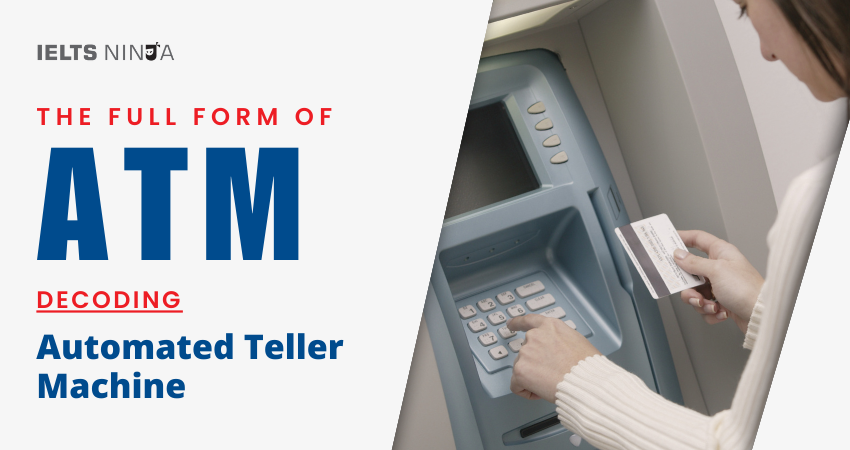The full form of ATM stands for “Automated Teller Machine”, and it is a self-service banking device that allows individuals to perform various financial transactions without the need for human assistance. ATMs have become ubiquitous worldwide and play a significant role in modern banking.
Key Details about ATM (Automated Teller Machine):
Here are key details about ATMs:
Purpose:
- ATMs are designed to provide convenient access to banking services and allow customers to perform a range of financial transactions outside of traditional bank branch hours.
- The primary purpose of ATMs is to dispense cash, but they also enable other transactions like deposits, balance inquiries, fund transfers, bill payments, and more.
-
Cash withdrawal is the most common transaction at ATMs. Customers can use their bank cards (debit or credit cards) and a personal identification number (PIN) to access and withdraw cash from their bank accounts.
-
ATMs can dispense various denominations of currency, depending on the machine and the bank’s settings.
- Many ATMs offer the capability to accept cash and check deposits. Customers can insert cash or checks into the ATM, which then processes and credits the funds to the customer’s account.
- Some advanced ATMs can scan checks and provide digital images of the deposited checks on receipts.
Balance Inquiries:
ATMs allow customers to check their account balances. This feature provides an instant update on the available balance in the linked account.
Fund Transfers:
- Some ATMs allow customers to transfer funds between linked accounts, such as from a savings account to a checking account within the same bank.
- Fund transfers can also include transferring money to another person’s account within the same bank.
Bill Payments:
- Certain ATMs support bill payments, enabling customers to pay utility bills, credit card bills, and other expenses directly from their bank accounts.
- Customers can enter bill details and make payments using the ATM interface.
Mini Statements:
Many ATMs provide mini statements that display recent transactions, including deposits, withdrawals, and account balances.
Also Read: Best online IELTS coaching & training academy
ATMs Accessibility:
- ATMs are typically available 24/7 and can be found at various locations, including bank branches, standalone kiosks, shopping malls, airports, and convenience stores.
- This accessibility ensures that customers can perform banking transactions at their convenience.
ATMs Security:
- ATMs are equipped with security features to protect users and their transactions. These features include PIN-based authentication, card retention mechanisms for lost or stolen cards, and surveillance cameras.
- Users are advised to be cautious and protect their PINs from prying eyes when using ATMs.
Evolution in ATMs:
ATMs have evolved over the years to include advanced features like biometric authentication (such as fingerprint scanning), contactless card payments, and advanced security measures to counter fraud.
Conclusion:
Automated Teller Machines (ATMs) have revolutionized the way individuals access and manage their finances. They provide a convenient and secure means of conducting various banking transactions outside of traditional banking hours. As technology continues to advance, ATMs will likely incorporate even more features and capabilities to meet the evolving needs of customers in the digital age.








